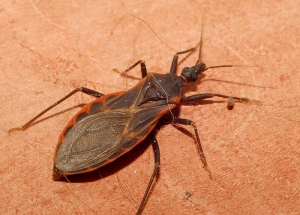Improving Participation in Vector Control Campaigns
Persuading households to adopt safe, effective, and low-cost interventions to improve health is challenging. Door-to-door health campaigns, once a staple of public health practice in the US, are now rarely used. In developing countries, door-to-door campaigns remain vital for disease prevention and the dissemination of health-related products and services. Unfortunately, participation rates in such campaigns are often low, diminishing the effectiveness of low-cost, proven interventions. For example, current low household participation rates in the Chagas disease vector control program in Arequipa, Peru threaten Chagas control efforts in the region.
Previous work has revealed a quiet epidemic of Chagas in poorer communities in Arequipa, where more than 5% of children are infected. The overarching goal of this study is to develop and evaluate new interventions to increase participation in large-scale public health campaigns, such as vector control campaigns, where high rates of participation are required to achieve health gains. The interventions are based on recent discoveries from behavioral economics about the common cognitive biases and mental shortcuts that contribute to low uptake of life-saving measures.


